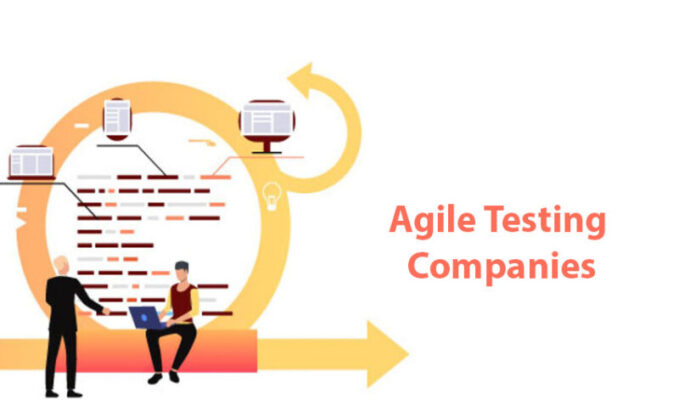In the fast-paced digital landscape, where agility and reliability are paramount, enterprises increasingly rely on cloud services to enhance their operations. Amazon Web Services (AWS) is a leading provider, offering many cloud computing solutions. However, with the transition to the cloud, the need for robust testing strategies becomes more pronounced. In this article, we delve into the intricacies of AWS cloud testing for enterprises, exploring the essentials of planning, execution, and optimization to ensure seamless integration and performance.
Table of Contents
ToggleUnderstanding AWS Cloud Testing
AWS cloud testing evaluates the performance, reliability, and scalability of applications deployed on the AWS cloud infrastructure. It encompasses various testing types, including functional testing, performance testing, security testing, and more. By simulating real-world scenarios and user interactions, cloud testing helps enterprises identify and mitigate potential issues before they impact end-users.
Planning for AWS Cloud Testing
Effective planning is the cornerstone of successful cloud testing initiatives. It involves defining clear objectives, establishing testing methodologies, and allocating resources appropriately. Here are key steps in planning for AWS cloud testing:
- Define Testing Objectives: Clearly articulate the goals of cloud testing, whether it’s ensuring application scalability, validating performance under load, or assessing security vulnerabilities.
- Identify Testing Scenarios: Analyze user behavior patterns and system requirements to identify relevant testing scenarios. Consider factors such as peak loads, geographic distribution, and anticipated usage patterns.
- Select Testing Tools: Choose suitable tools and frameworks compatible with AWS services. AWS offers a range of native and third-party tools for different testing requirements, such as AWS CodeBuild for continuous integration and AWS Device Farm for mobile app testing.
- Allocate Resources: Determine the required infrastructure, including compute instances, storage, and networking components. Leverage AWS services like Amazon EC2, Amazon S3, and Amazon RDS to provision scalable and cost-effective testing environments.
Executing AWS Cloud Testing
Once the planning phase is complete, enterprises can execute cloud testing activities. This involves deploying test environments, executing test cases, and analyzing results to identify performance bottlenecks and areas for improvement. Here’s a breakdown of the execution process:
- Environment Setup: Provision test environments on AWS using Infrastructure as Code (IaC) tools like AWS CloudFormation or AWS CDK (Cloud Development Kit). Automate the deployment of infrastructure components to ensure consistency and repeatability.
- Test Case Execution: Execute test cases across different testing scenarios, leveraging automation frameworks like Selenium for web application testing or JMeter for load testing. Implement continuous testing practices to integrate testing seamlessly into the development pipeline.
- Performance Monitoring: Monitor the performance of AWS resources during testing using AWS CloudWatch and other monitoring tools. Collect CPU utilization, memory usage, network throughput, and latency metrics to identify performance anomalies.
- Issue Identification and Resolution: Analyze test results to identify issues such as latency spikes, resource constraints, or application errors. Collaborate with development and operations teams to prioritize and address identified issues promptly.
Optimizing AWS Cloud Testing
Continuous optimization is essential to enhance the efficiency and effectiveness of AWS cloud testing processes. Enterprises can streamline testing workflows and drive better outcomes by leveraging automation, scalability, and best practices. Consider the following optimization strategies:
- Automate Testing Workflows: Implement automation across the testing lifecycle, from test case execution to results analysis. Use AWS Lambda and Step Functions to automate repetitive tasks and orchestrate complex testing workflows.
- Utilize Serverless Testing: Embrace serverless testing approaches using AWS Lambda, AWS API Gateway, and AWS DynamoDB. Serverless architectures offer inherent scalability and cost advantages, allowing enterprises to execute tests efficiently and cost-effectively.
- Implement Chaos Engineering: Conduct chaos engineering experiments to identify system weaknesses and proactively improve resilience. Utilize AWS services like the AWS Fault Injection Simulator and AWS Systems Manager to simulate real-world failure scenarios and assess system reliability.
- Optimize Costs: Optimize testing costs by right-sizing test environments, leveraging spot instances for non-production workloads, and implementing cost allocation tags for resource tracking. Leverage AWS Cost Explorer and AWS Budgets to monitor and manage testing-related expenses.
Conclusion
AWS cloud testing is critical to enterprise software development, ensuring the reliability, scalability, and security of applications deployed on the AWS cloud platform. By strategically planning, executing, and optimizing testing activities, enterprises can mitigate risks, accelerate time-to-market, and deliver superior user experiences. Embrace automation, leverage AWS services, and adhere to best practices to unlock the full potential of AWS cloud testing and drive business success.
Zainab Afzal is a senior SEO Consultant and Writer. She has 5+ years of experience in Digital Marketing. After completing his degree in BS computer science, she has worked with different IT companies.





